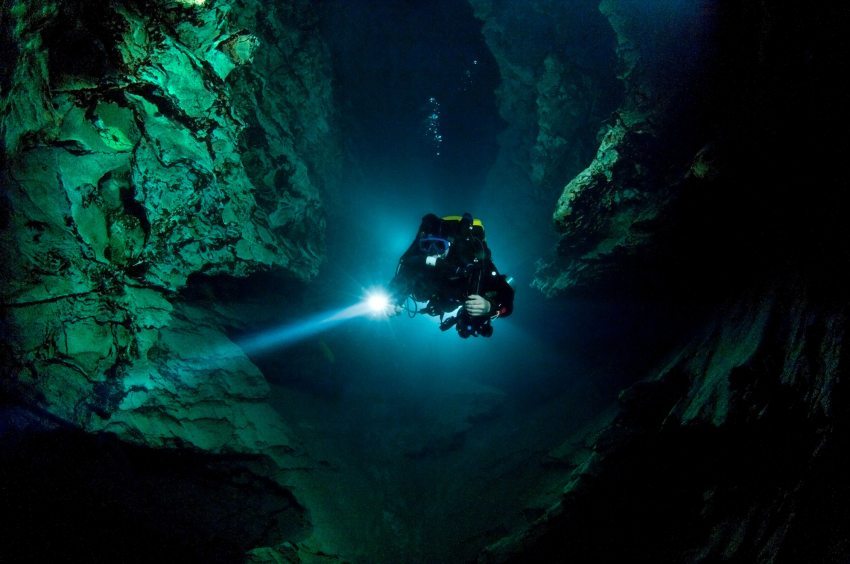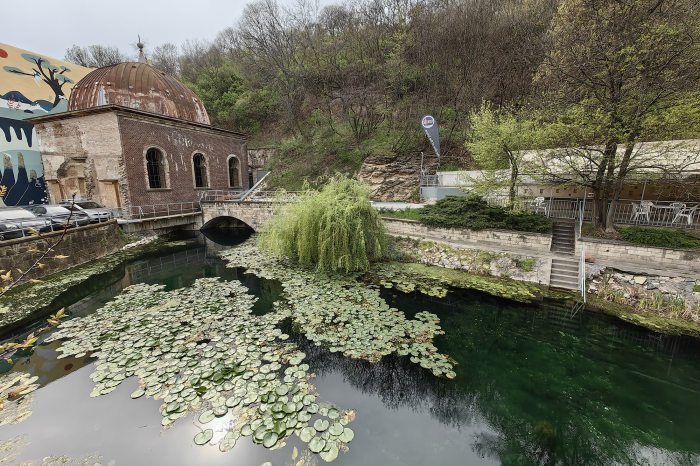Underwater labyrinth beneath the heart of Buda – The mysterious János Molnár Cave
Hidden beneath József Hill (now known as Szemlő Hill) in Budapest is an underwater labyrinth, the János Molnár Cave, which stretches for more than eight kilometers. Hungary's largest water-filled cave, part of the Danube-Ipoly National Park, would appear to be a small lake on the surface, but in the more than 150 years since its discovery, it has still not been fully explored.

Deep beneath the Buda Hills, under the Rózsadomb district to be precise, lies the largest water-filled cave system in Hungary, which is considered to be the largest thermal cave in the world. The Molnár János Cave is the water conduit for the Boltív and Alagút springs, and the cold karst water from the Buda Hills and the thermal spring water from the depths supplies the Malom Lake and the Lukács Spa and Swimming Pool. The cave, which has been a protected area since 1982, has a constant temperature of 22-23 degrees Celsius, regardless of the season, and is only accessible to qualified divers, mainly for research purposes.
The history of the artificial mill lake on today's Frankel Leó Road dates back to the 16th century. The lake, which is fed by hot springs in winter and summer, was created by the Turks, as was the gunpowder mill that stands there. In 1686, under Habsburg rule, the latter was converted into a traditional mill and continued to operate under the name of the Emperor's Mill until the 19th century. In 1806, the Császárfürdő ('Emperor's Baths'), a hospital of the Hospitaller Order of Saint John of God, was opened on the lakeshore, which was rebuilt in the second half of the century, and its neoclassical wing was built according to the plans of József Hild. At the turn of the 20th century, the Lukács Bath House, designed by Rezső Ray, with Moorish features and reminiscent of Turkish baths, was built and soon took over the role of the Emperor's Bath.
Following the spring
The natural thermal springs of the Buda Hills were known even to the Romans, and the area known as Felhévíz hides a number of thermal karst caves, most of which were discovered by accident, including the system of passages known for many years as the Malomtavi Cave. In 1858, the pharmacist János Molnár, in search of the springs that feed the present-day Lukács Baths, found a cleft in the side of József Hill. The curious natural scientist suspected a water-filled cave above the water level of Mill Lake inside the mountain.
He and a colleague ventured down to see the cave for themselves, and although they could not determine the extent of the cave, they explored the accessible parts and made a detailed analysis of the water they found.
An attempt was made to drain the lake in order to find the spring, but the water-filled tunnels made further exploration impossible. Molnár shared his discovery with the public in 1858, and his first description of the cave was published in a medical journal, the "Orvosi Hetilap", followed a year later by a study in the yearbook of the Hungarian Royal Natural History Society. Molnár was the first to study the springs that fed the baths, and he also analysed the water and temperature of the cave in detail, and even made drawings of this natural wonder.
For advanced divers only
For decades, only small-scale explorations were carried out due to a lack of appropriate technology, and few people undertook the life-threatening operation, as they had to dive through a small iron door and then down a narrow passage into the unknown depths. The first more detailed survey of the cave was carried out by Ferenc Papp and Sándor Tarics in 1937, followed in 1953 by one of the first Budapest dives of light diving in the Malom Lake by Dr. Hubert Kessler, Ödön Rádai and Attila Chambre, who attempted one of the first Budapest dives of light diving in Hungary with oxygen breathing equipment provided by the fire brigade, but without success.
In 1959, after several unsuccessful attempts, István Holly was the first person to descend into the water with a simple diving mask and a waterproof flashlight, and then swim through two temporarily submerged passages, known as siphons.
"Beyond that, there was a low cave, with barely an inch of air between the water and the ceiling. Soon the cave was completely filled with water. Swimming in, however, he found that the passage ended here. [...] The next day they found two completely dry rooms 4 stories high. After a few test dives, it turned out that this was not the whole cave, the water, in some places more than 10 metres deep, covered a large system of caverns," the University Newspaper reported on the discovery, which had been awaited for decades. Then outside help arrived, "using frogman equipment to penetrate the water-filled cave system, several underwater passages were found. The maximum depth they reached was 15 metres, but they could have gone further down."
János Molnár had already suggested opening up the natural treasure via the mountain, and in 1976 Dr. Hubert Kessler argued for the cave's use for medical purposes. Since the end of the 1950s, people suffering from respiratory diseases had been treated in Hungarian caves, and so the idea was born to build a room for 20 patients, connecting the unions' summer boarding blocks on the Rózsadomb with the passageway system, and a corridor through which the Lukács Baths could be accessed by guests regardless of the weather. Although the construction began, the idea did not materialise.
The golden age of research
The exploration of the Mill Lake Cave revived in the 1960s, and in 1973 a major expedition led by István Plózer, a diver and cave explorer, was launched. One member of the team, Gábor Mozsáry, recalled the event in his work Deep in the Underground Waters. " Diving down, it's like being in a water tank. Beautiful, clear water and life everywhere. Fish, plants. We take photos in the lake, because it's a rare occasion. Mr. Lily, the tenant, feels like we're trampling his vegetable garden. He thinks we're tearing up the plants, but it's just the water churning up as we swim. Diving in the pond is wonderful, but what we've come for is yet to come. Under the archway at the corner of the lake, a dark crevice opens up, above and below the water you can see far. We swim into it one after the other. The crevice is narrow but passable."
To ensure safer diving, coloured ropes were tied in the passages, and bases were set up in two air-filled chambers to help detect further passages.
As a result of the research, three hundred metres of the cave system was discovered.
Eight kilometres of maze
The deepest parts of the cave, which has borne the name of János Molnár since 1977, reach up to ninety to one hundred metres, and its known passages are now eight kilometres long, but it is still not known exactly how much of the cave is still to be explored. In the 2000s, an artificial cut in the cave revealed the world's largest thermal water chamber, a twenty to twenty-five-metre high hall named after Hubert Kessler. This fundamentally changed the future possibilities for exploration of the cave by creating a surface base for divers, making dives more efficient. Today's research is not just about exploring the excavated sections, water flow and water quantity, but also about studying the wildlife in detail.









